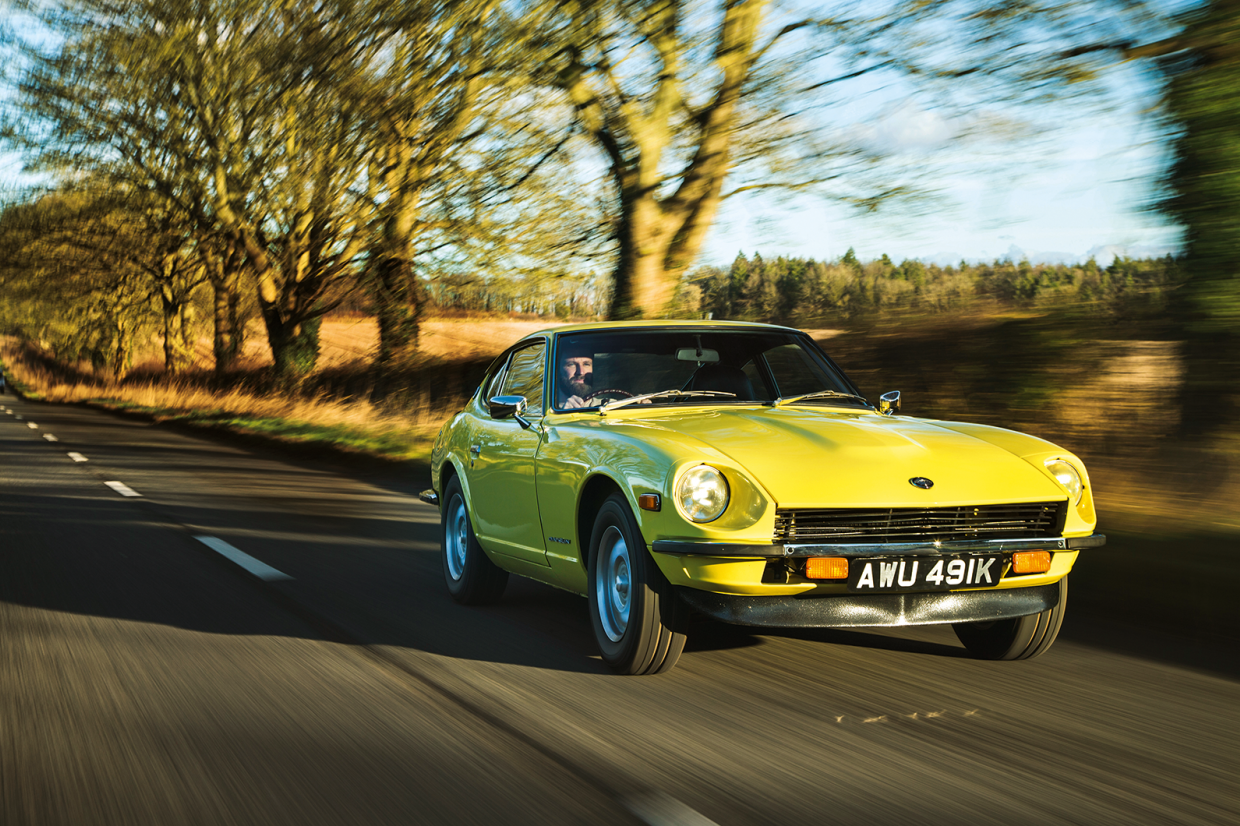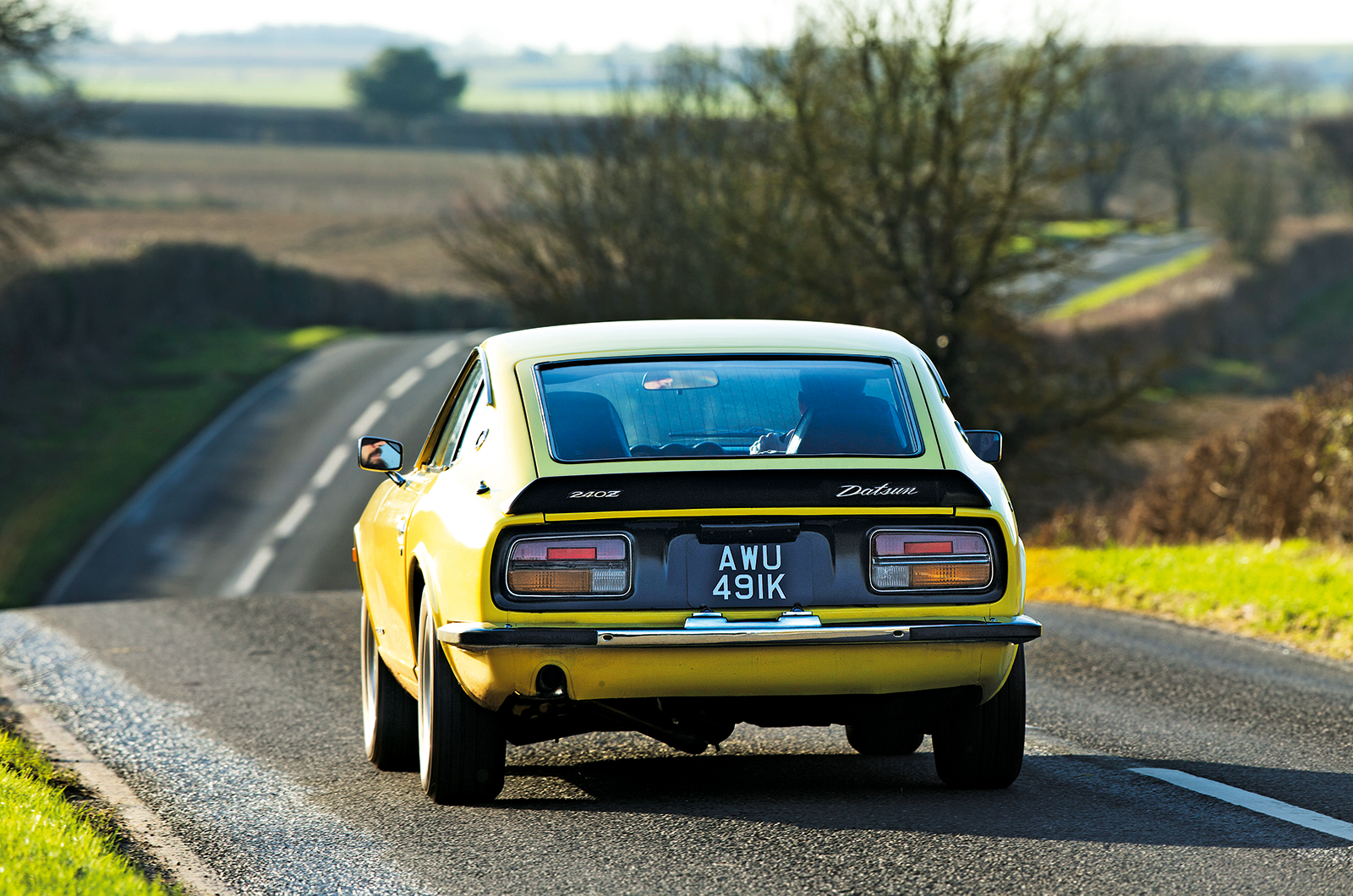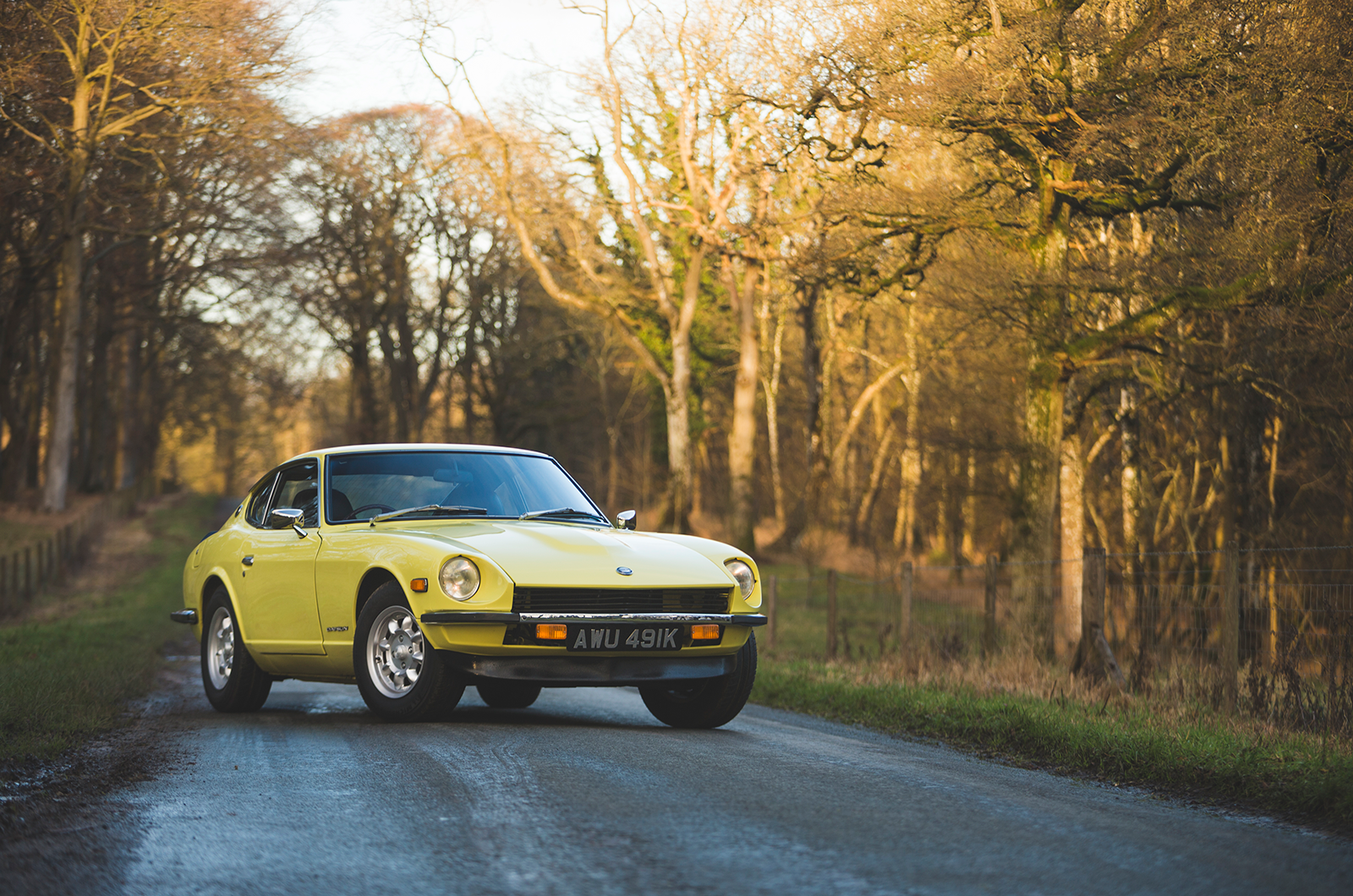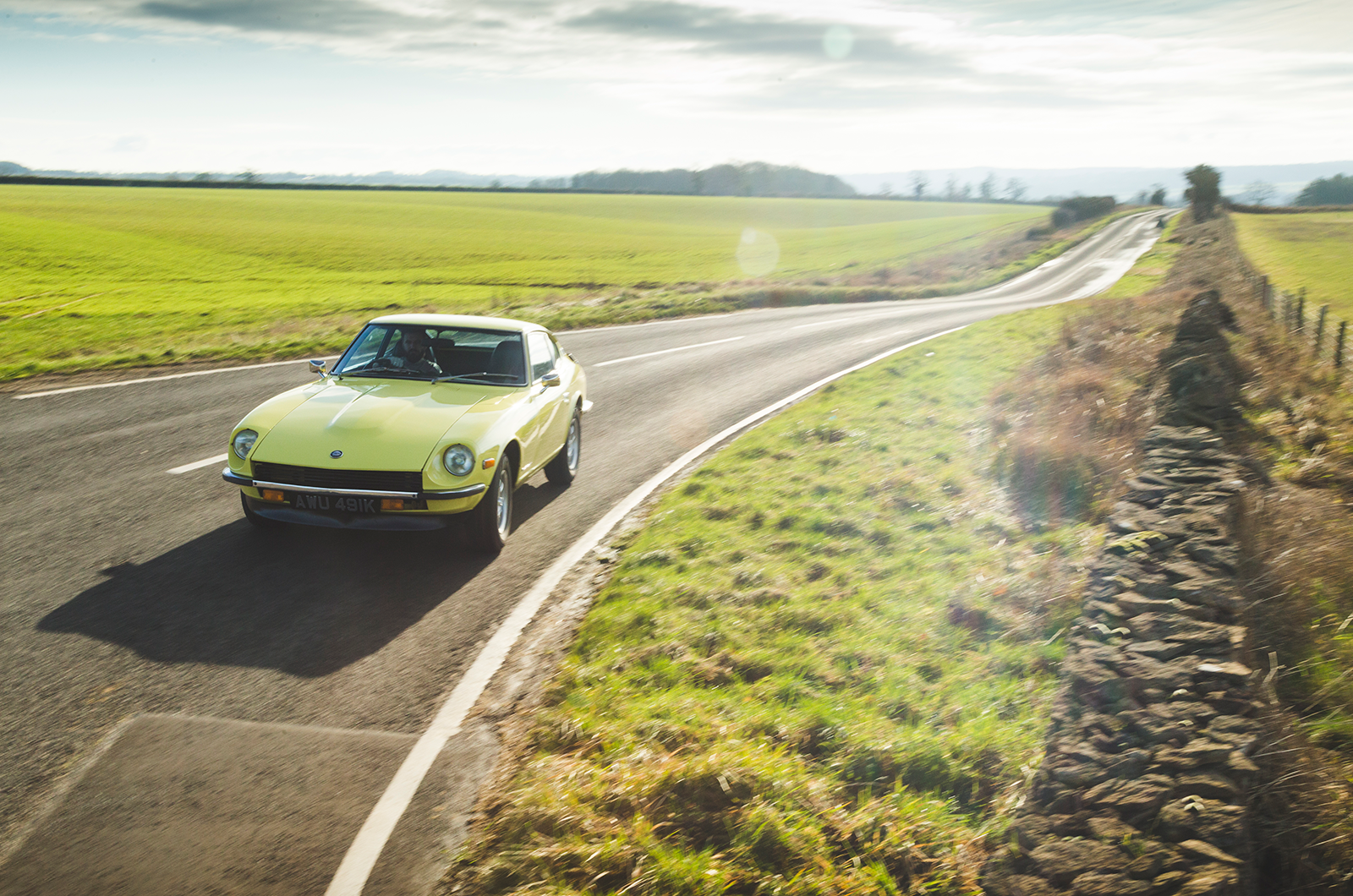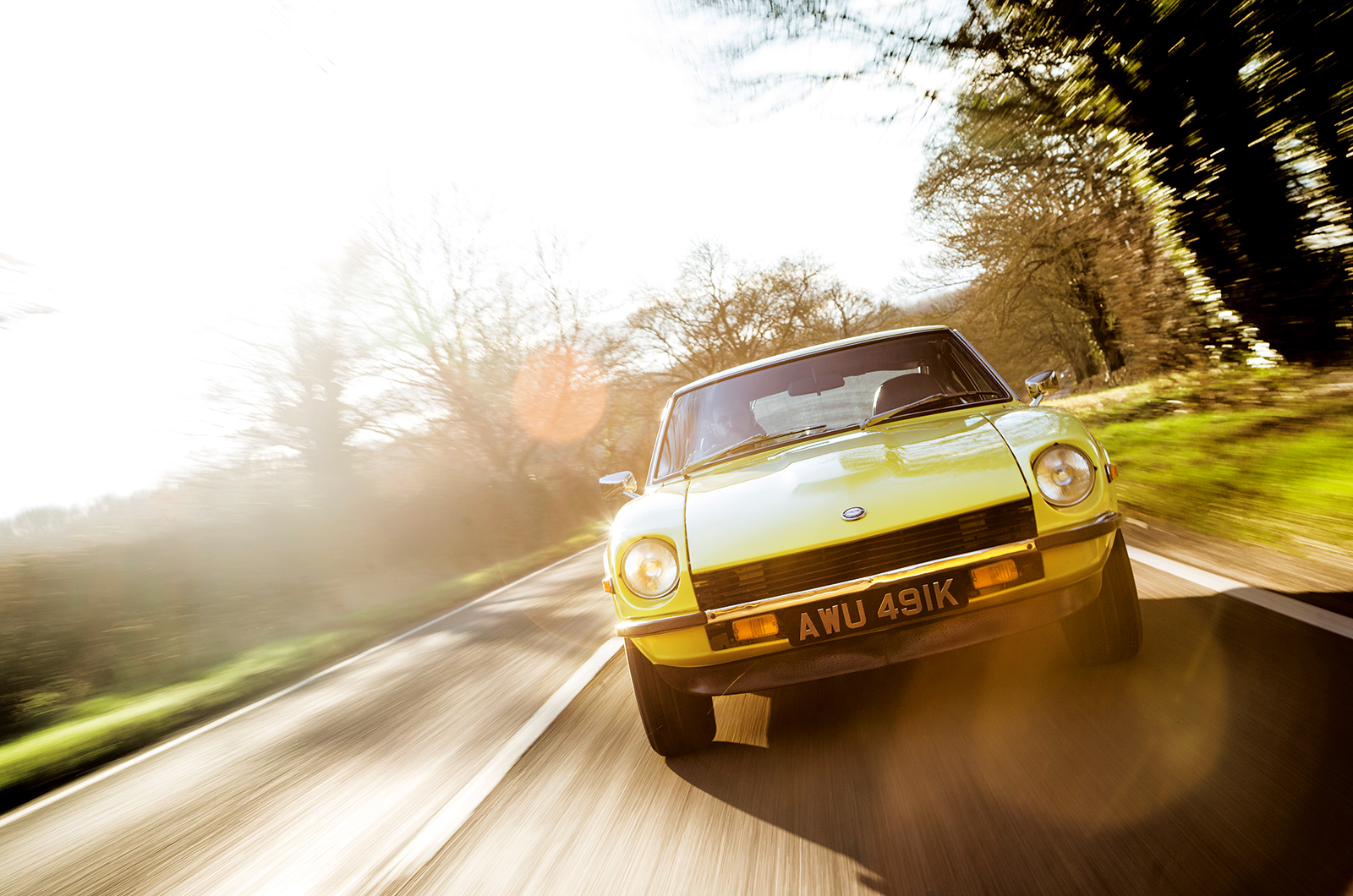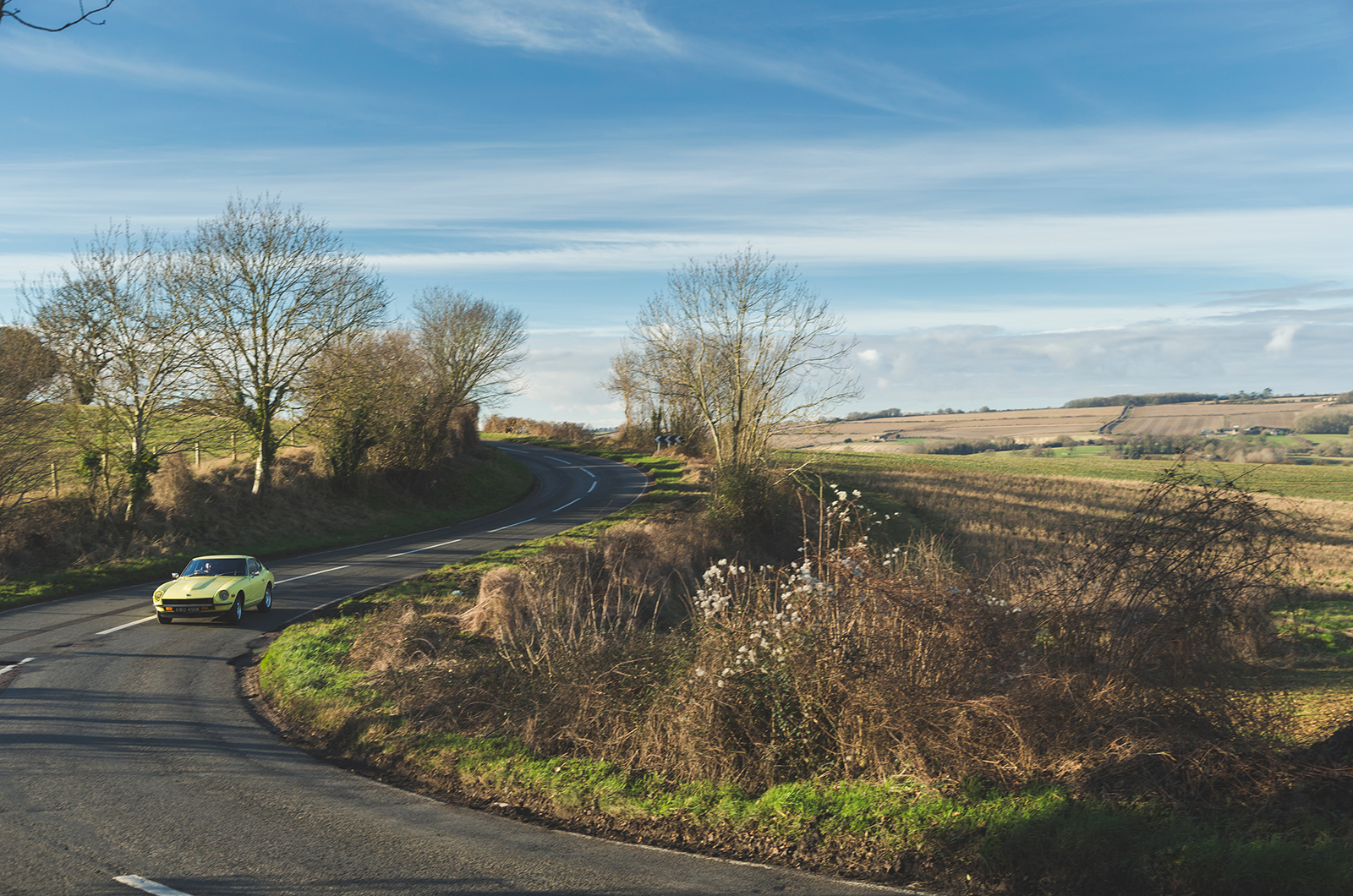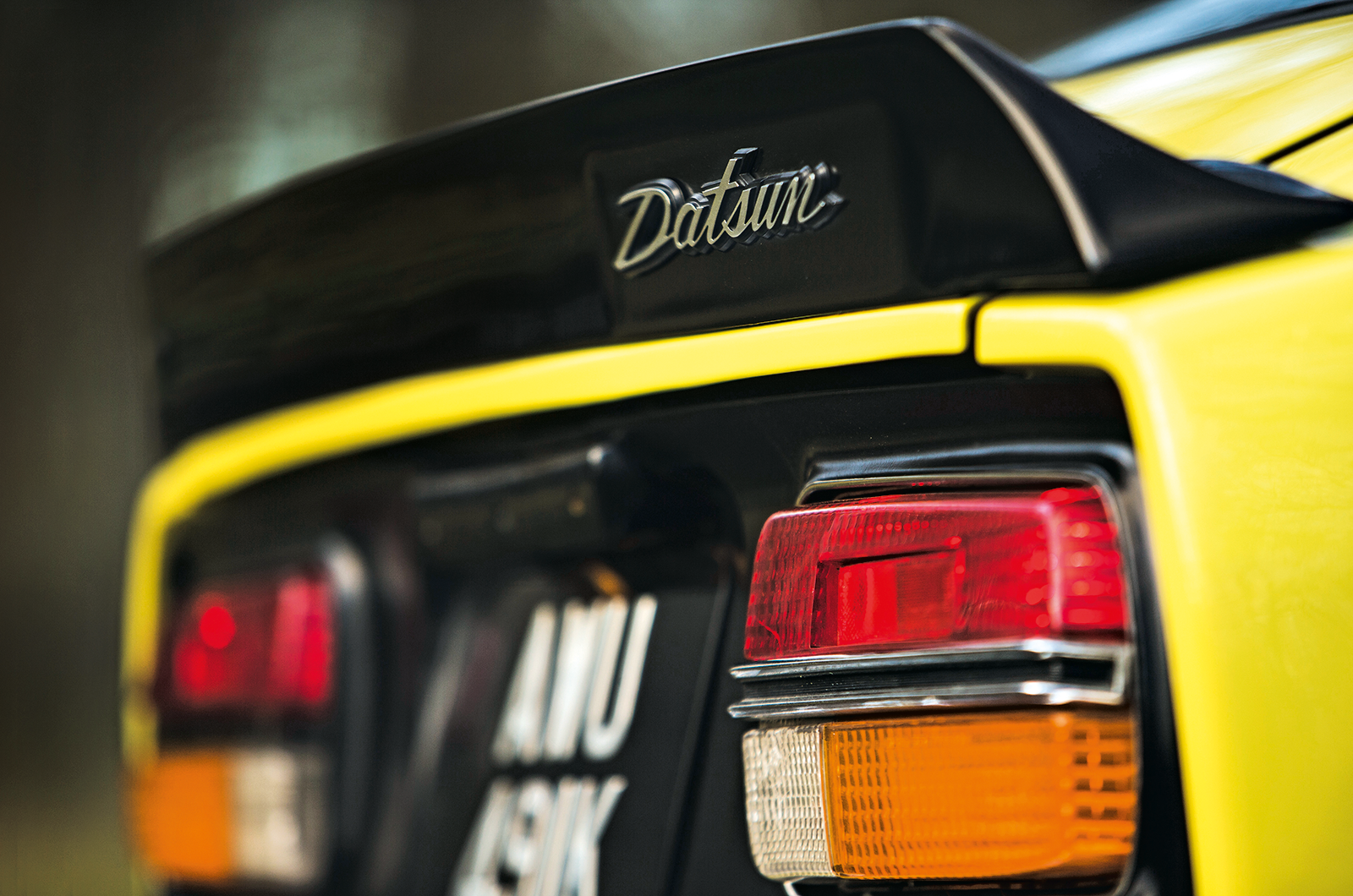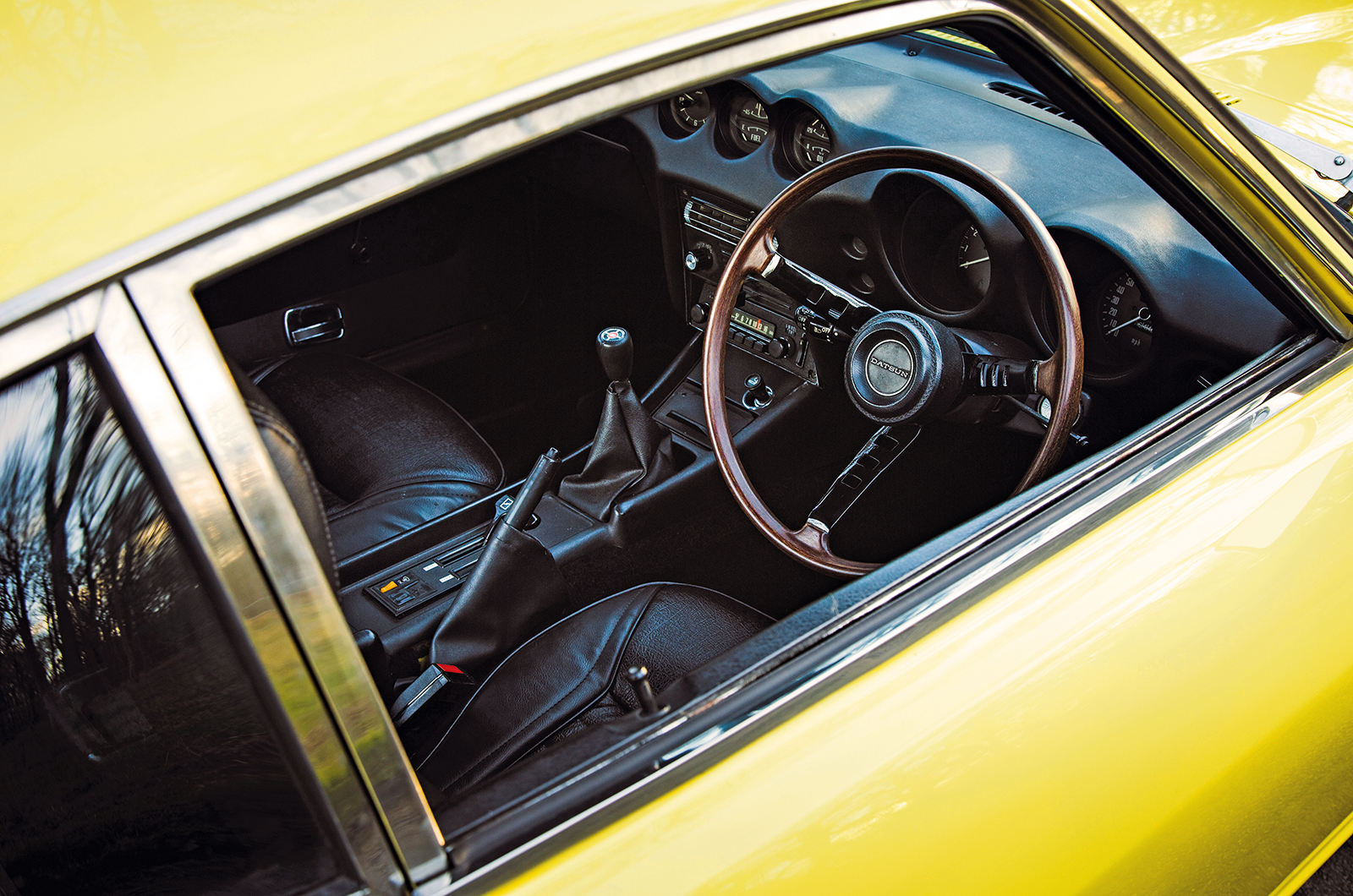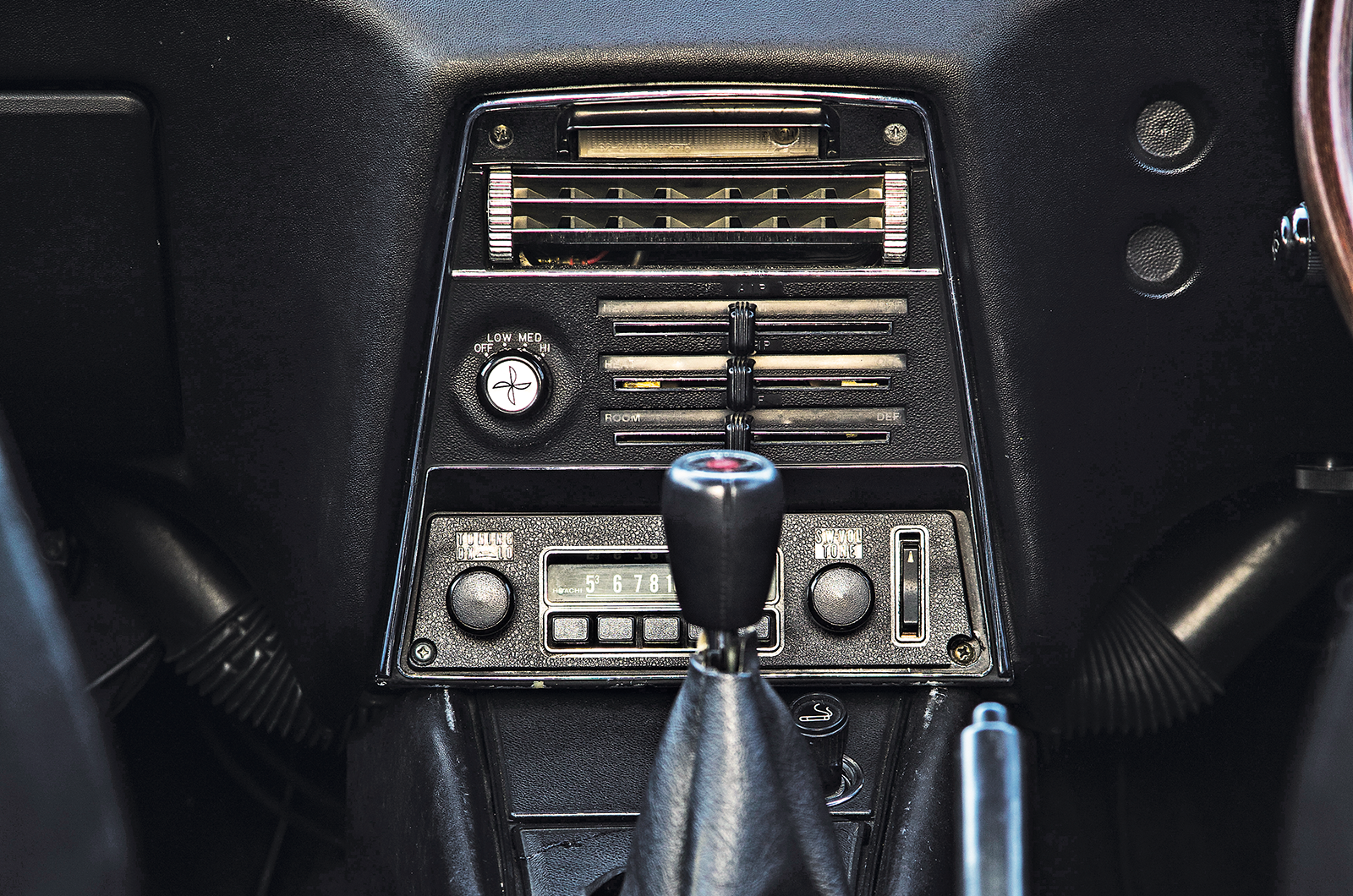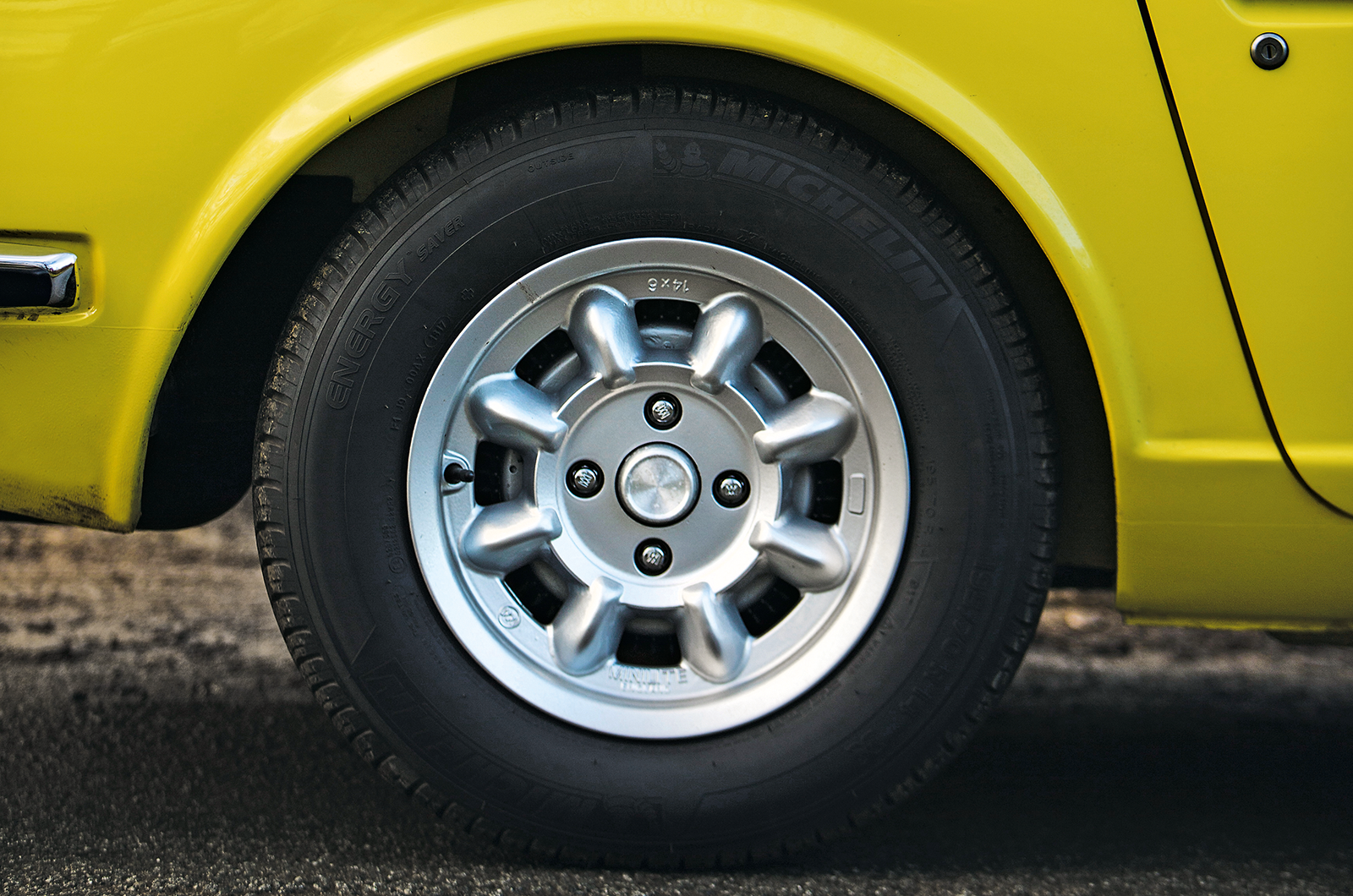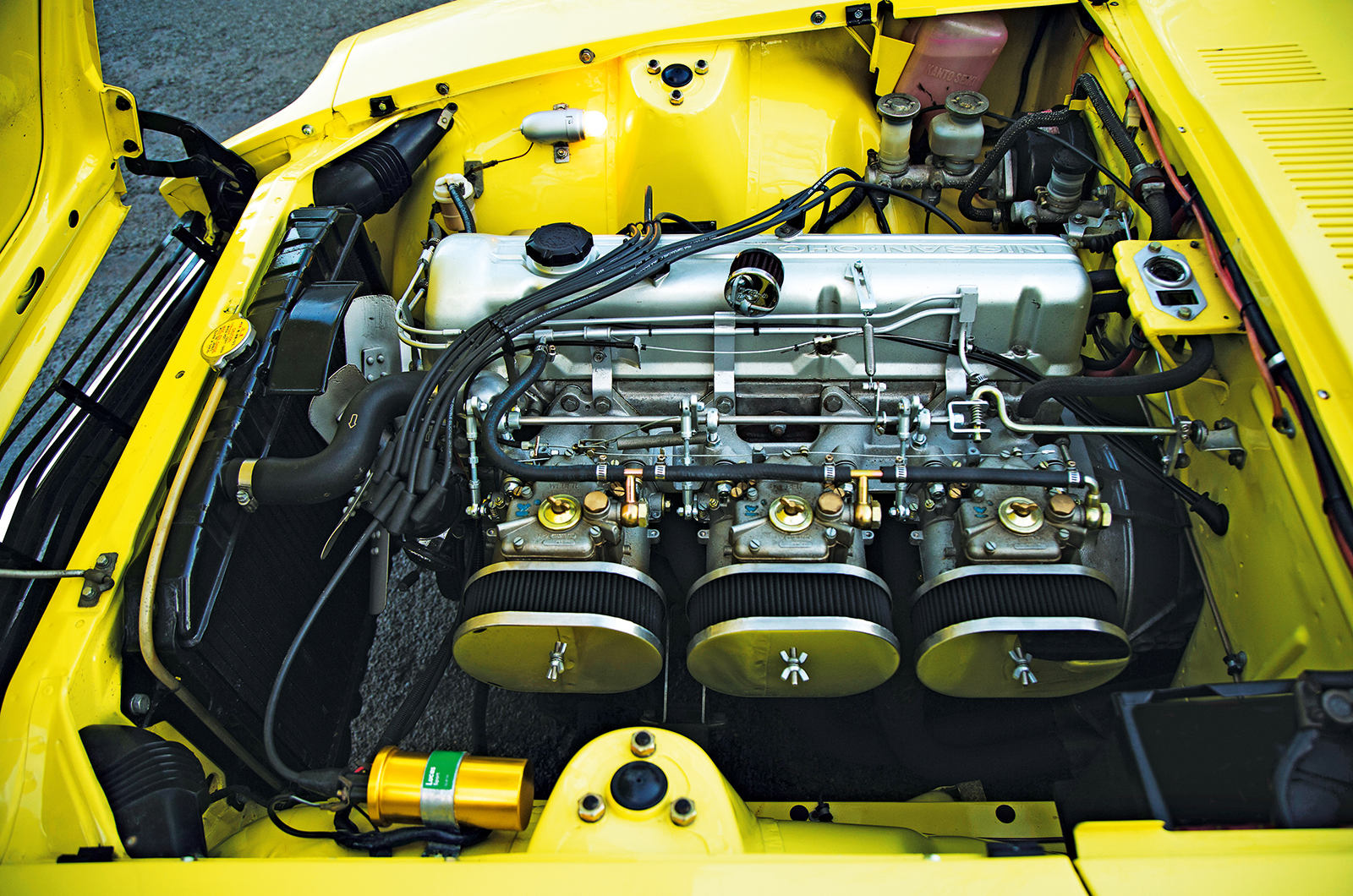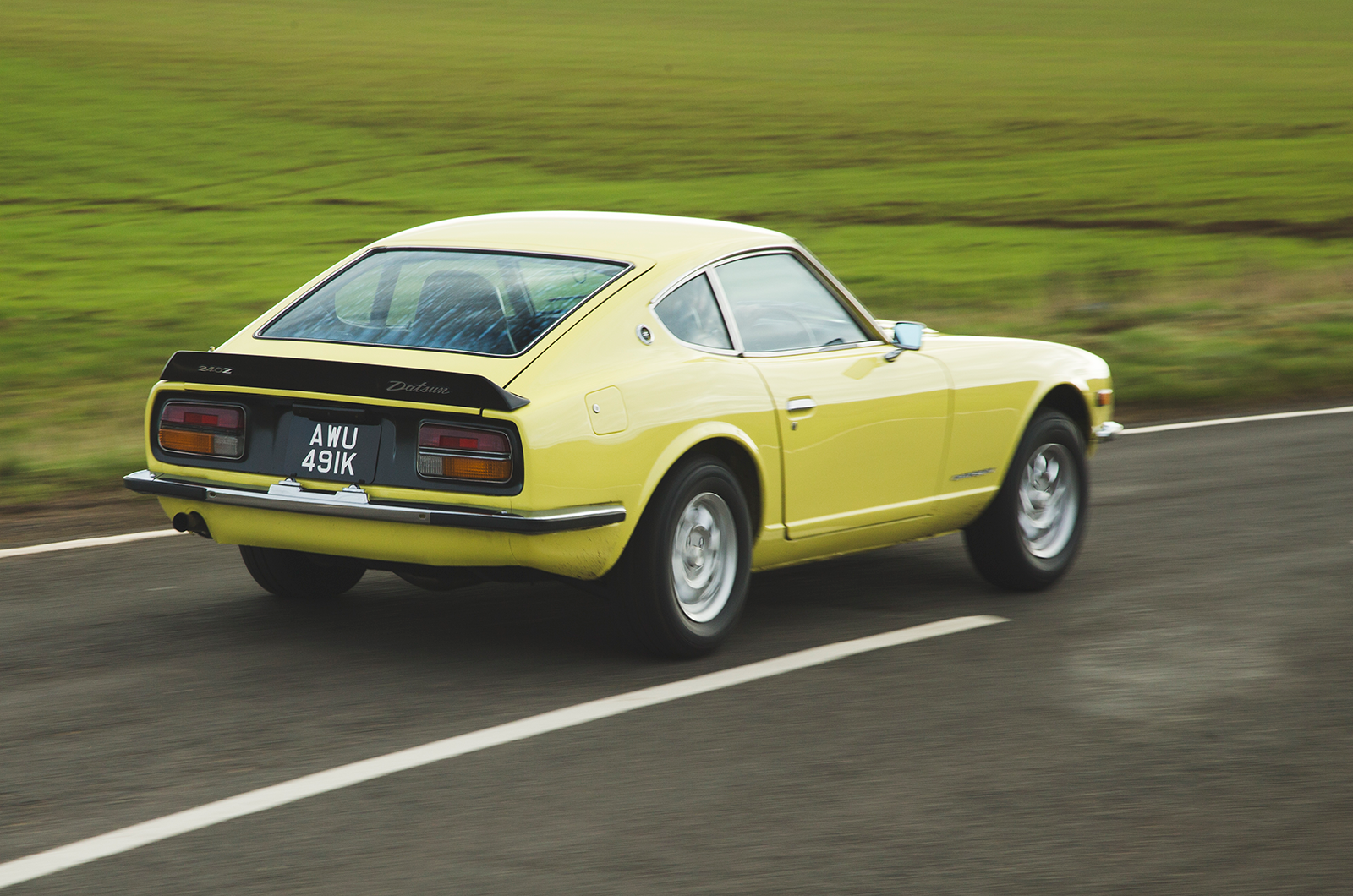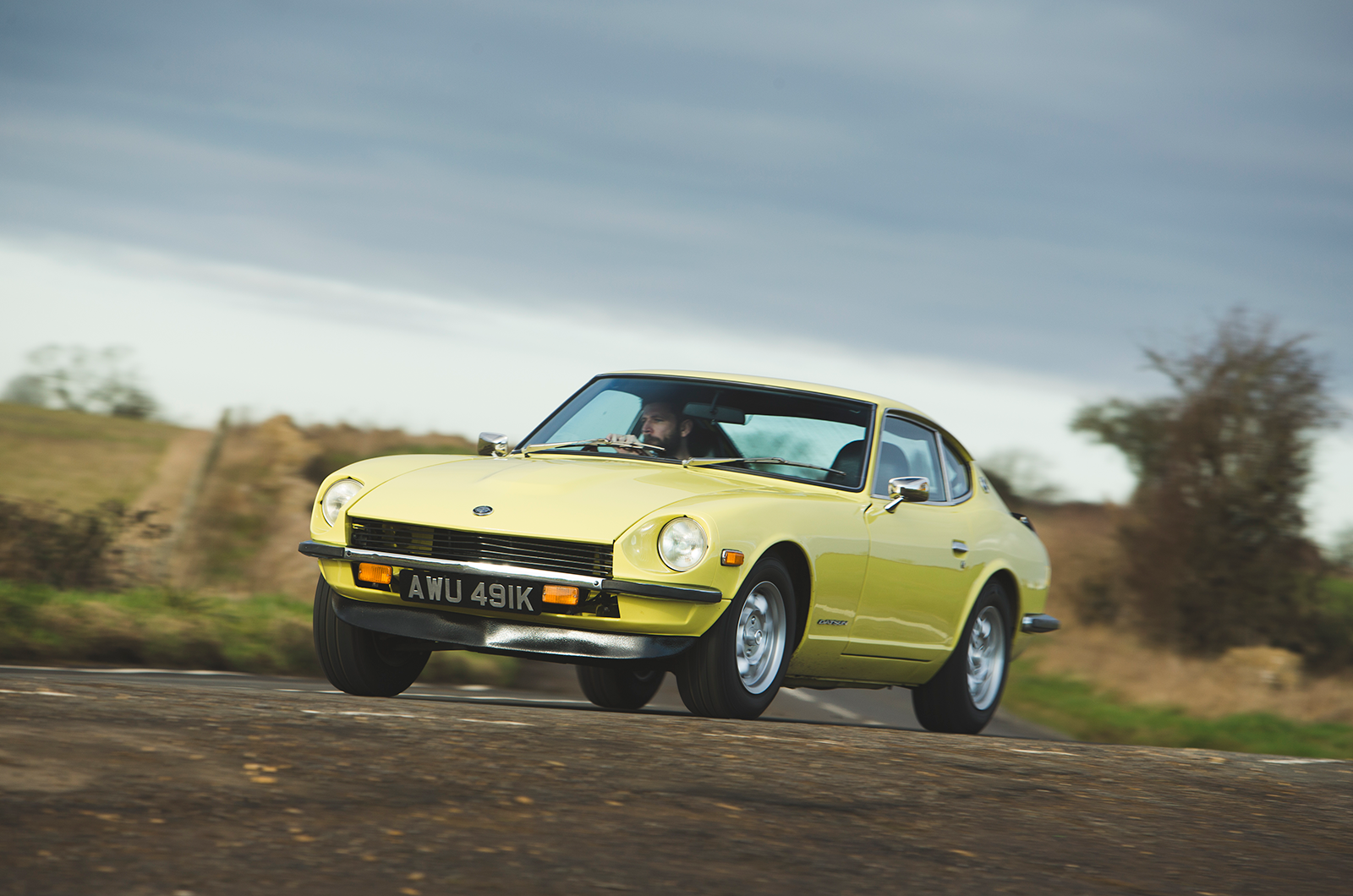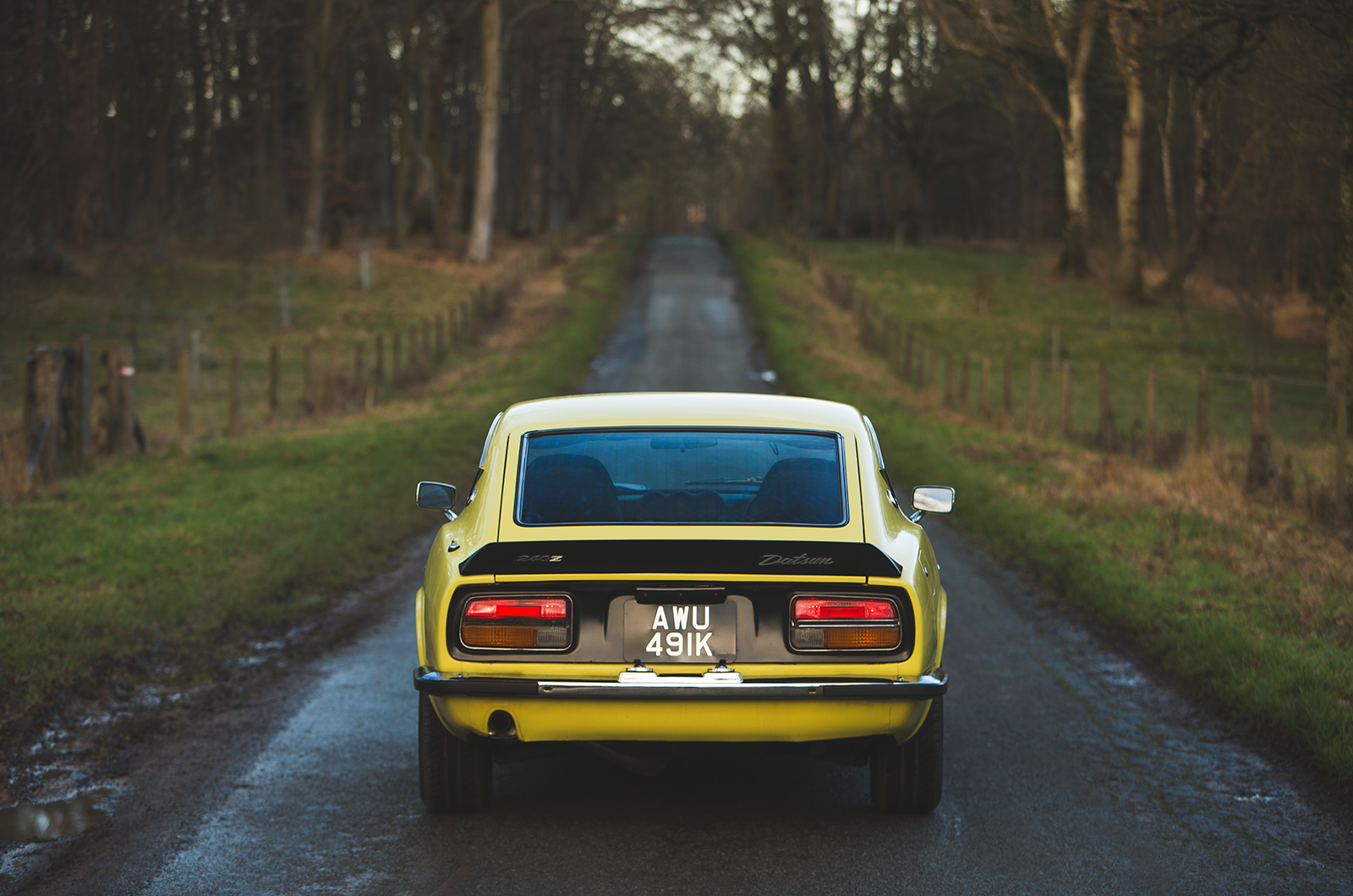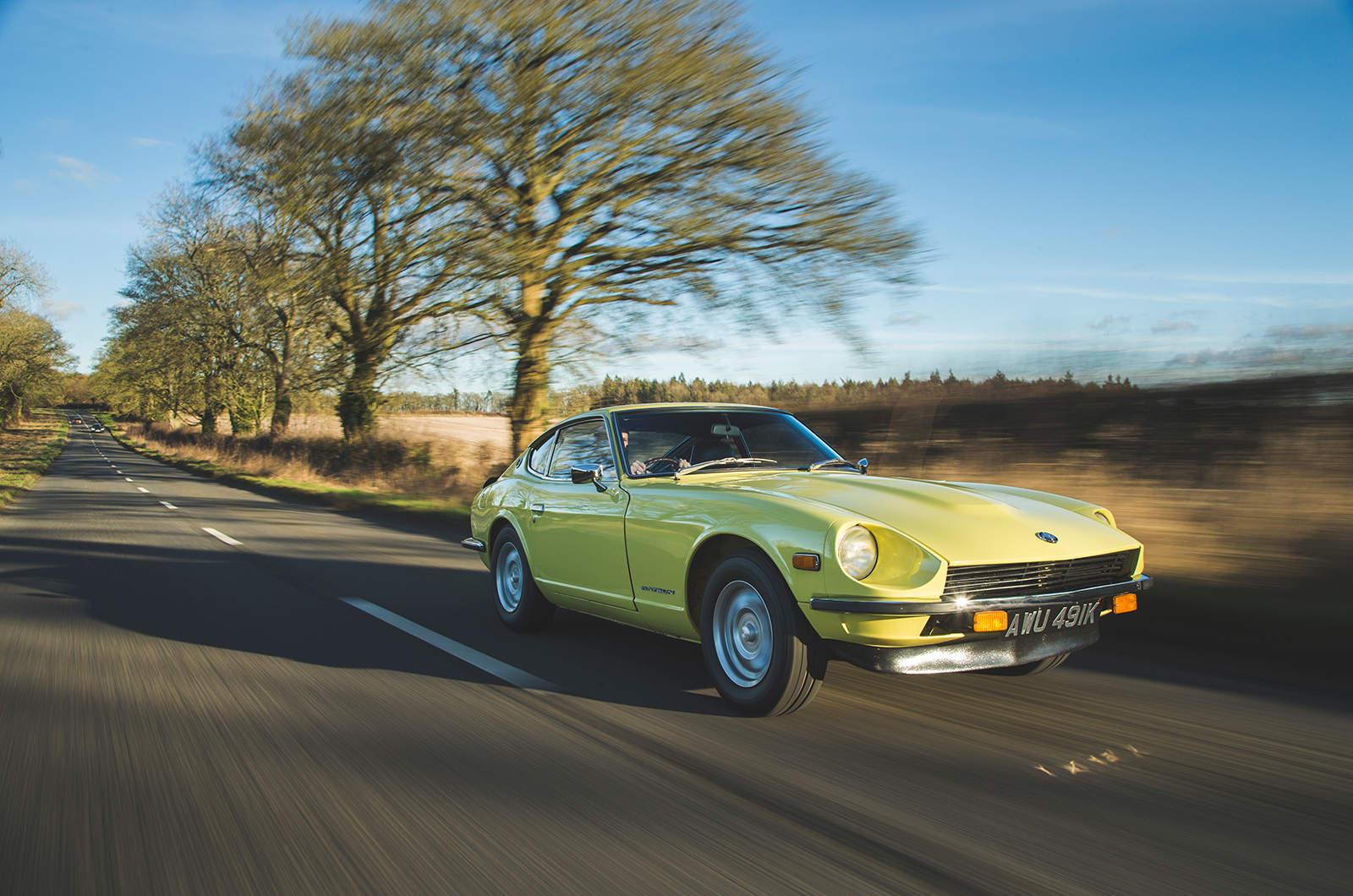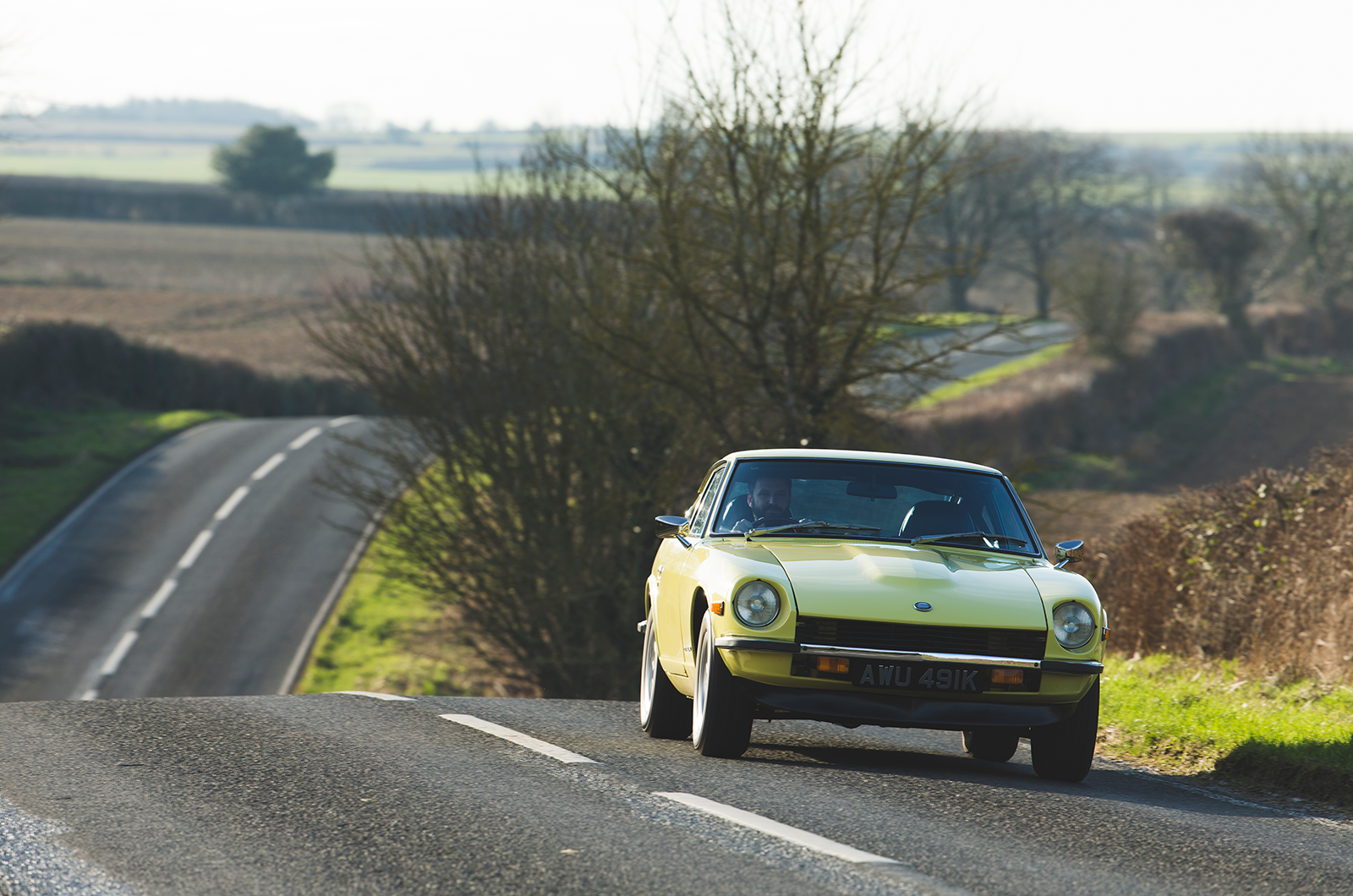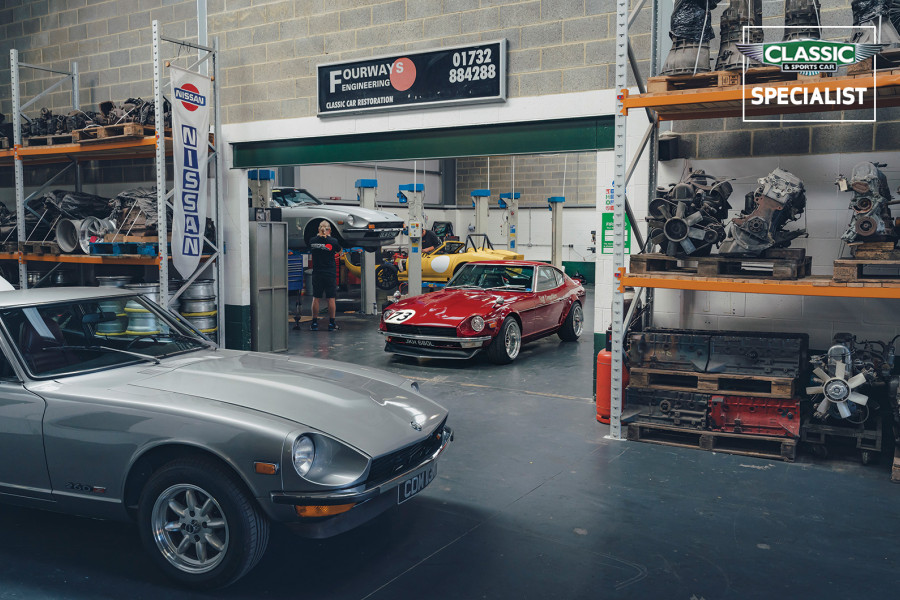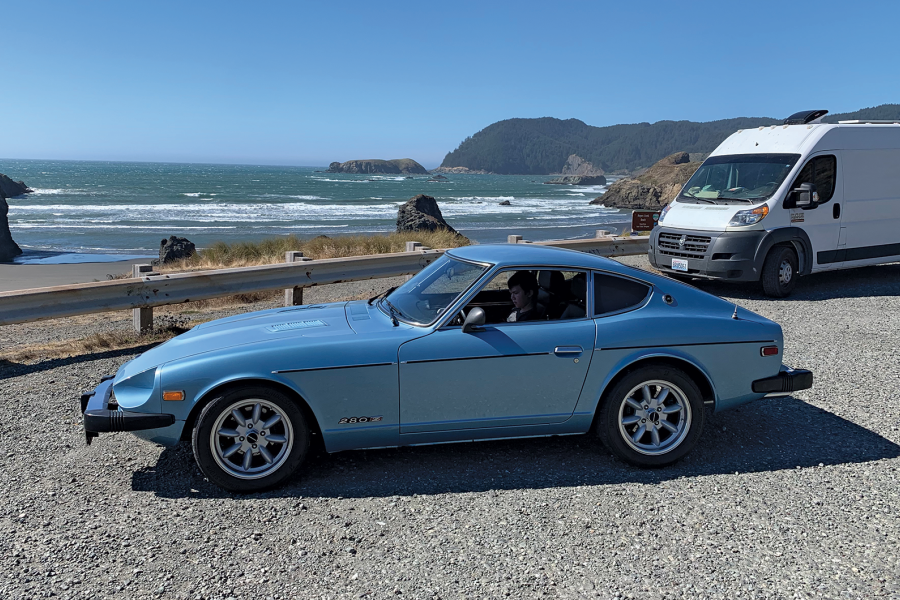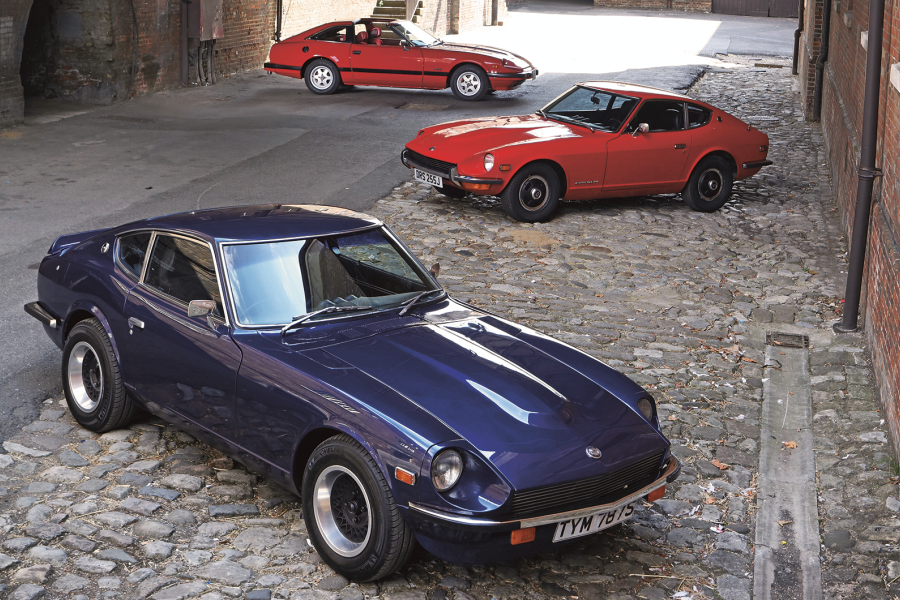Over rougher surfaces and in tighter bends things become a bit more unsettled, with the scuttle shake you expect of any ’60s sports car, but broadly the suspension does a decent job of keeping all four wheels on the Tarmac.
Most owners will have upgraded these components to tidy the handling and release the chassis’ potential, but even in factory trim – insisted upon by the team at Nissan – the Z carries itself well, absorbing the worst of the bumps while remaining sharp enough for a grin to be planted permanently on your face.
If the 240Z has one flaw, it’s price.
Buying a nice one today will set you back the thick end of £30,000; even more if you want the very best.
It’s a problem that afflicted the car in period, too, at least in this country.
To buy a Z in 1970 would cost nearly £2300, at a time when an MGB GT was less than £1500, and a Capri just £100 more than that.
It’s noteworthy that Datsun sold any at all, let alone the 1600 it actually shifted.
To properly measure the car’s success you have to look at its target market: the United States.
There, the Datsun represented staggering value, at almost half the cost of a Mercedes-Benz 280SL.
If you wanted a home-grown Corvette, you’d have to increase your budget by 50% – even more still to get an E-type or 911T.
It takes an almost never-ending string of adjectives to sum up the success of the 240Z.
Fast, agile, engaging, comfortable and beautiful make a fine start.
But the final, and most important, is also the most surprising, and not one readily associated with such a superbly built and well-equipped sports car: cheap.
Images: Luc Lacey
Thanks to Nissan UK; The Z Farm
Factfile
Datsun 240Z
- Sold/number built 1969-’73/156,078
- Construction steel monocoque
- Engine iron-block, alloy-head, single-overhead-cam 2393cc straight-six, twin Hitachi SU-type carburettors
- Max power 151bhp @ 5600rpm
- Max torque 146lb ft @ 4400rpm
- Transmission five-speed manual, RWD
- Suspension independent, at front by MacPherson struts, anti-roll bar rear MacPherson struts
- Steering rack and pinion
- Brakes discs front, drums rear, with servo
- Length 13ft 7in (4140mm)
- Width 5ft 4in (1625mm)
- Height 4ft 2½in (1283mm)
- Wheelbase 7ft 6in (2299mm)
- Weight 2284lb (1038kg)
- 0-60mph 8 secs
- Top speed 125mph
- Mpg 24
- Price new £2288 (1971)
- Price now £20-50,000*
*Prices correct at date of publication
READ MORE
Triumph GT6: Canley’s super six
The sky’s the limit: Nissan Skyline R32 meets 2000GT-R
Transatlantic tussle: Chevrolet Corvette vs Jaguar E-type
Greg MacLeman
Greg MacLeman is a contributor to and former Features Editor of Classic & Sports Car, and drives a restored and uprated 1974 Triumph 2500TC
